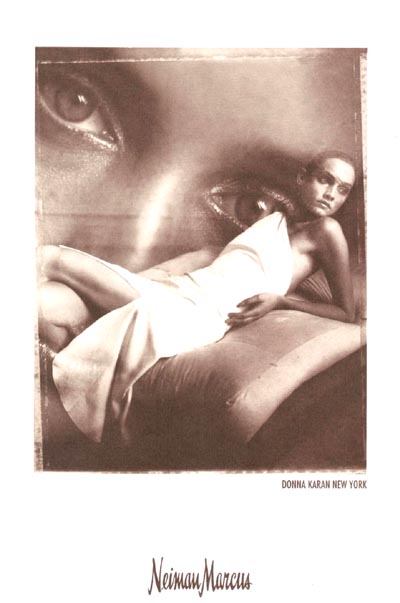 Hannah Gregory
Hannah GregoryIs It She, or Is It Me?
Look at her. The vision of a Goddess in a sprawling seductive pose, looking away as if unaware of her beauty and the power of her allure. Ah, but her eyes are the pathway to the soul of her intent. They pull you in, past her superficial image, to the real woman, the real human being that exists there. Her eyes seem to look into me and connect with a desire that I've hidden away and ultimately hate to admit to: the fact that I'd like to have the furtive glances and subtle stares that men place on her, their desire that she can grasp control of. And she knows this. She knows that she perches in the seductive, relaxed way that draws the eyes of men her way, and she knows that I want to be her. So, she looks at me, she talks to me and tells me that I have the capacity to be her, that she is me. I see her up close and realize this through the bit of human face staring back at me, thinking and breathing just as I do.
Advertisements in today's world attempt to erase the line between ideals and reality. They try to bring us closer to what we want, what we rarely need, and most importantly who we want to be. The woman that exists in this ad establishes herself as who I want to be, but how exactly does she take control over my ideals with a sultry pose and a mere glance of her eye?
The most evident denotation of the ad occurs in her facial positioning. She looks away in the anterior image, while simultaneously looks directly at the audience in the close-up posterior image. The two different gazes existing at one time not only signify the idea that she's being looked at, but that she knows it. Originally, she looks away as if she was pretending not to notice the eyes upon her; although, the presence of her eyes in the background address the audience directly, making clear her knowledge of the attention she receives. By using a direct address there is no room left to view her as a mere intangible model, rather she looks at us through human eyes, eyes much like our own which we can relate to. The distinct directions of her gaze help to merge the ideal image of femininity and attraction that she hopes to portray, and the audience that she attempts to influence.
The code of femininity is not only derived from the obvious slender curve of her shoulder or the shadow on her eyes, it's signified by the simplicity of her dress that wraps around her like one of a Greek Goddess. This image of a Goddess symbolizes the notion of worship, which has been [desired] by women and [performed] by men for centuries. The subtle influence of her dress reminds women of their desire to be worshipped and adored, yet most of all to be looked at.
The cant of the woman also helps to add to the idea of femininity and worship by signifying seduction. She lies prone and relaxed in a . . . vulnerable position, yet in complete conscious control of her effect. As a result, her positioning signifies an aire of confidence and power over the male gaze that she initiates. Being a Donna Karen ad directed towards a female audience there exists the intent to establish a relationship between the woman in the ad, and the female viewer. There is an unwritten understanding between the two that touches on the concept of feminine unity, and the general wants and desires of attention and confidence that most women yearn for. Through the cant of the woman she subjectifies the experience of control over her femininity, creating who she wants to be -- who, [the ad tells us,] all women want to be.
Both signs in the foreground and the background define the idea of identity, which lies between reality and social ideals. Working together they not only establish the confident alluring woman that the feminine audience aspires to be, yet through the use of knowing, feminine eyes they tell her that it can be her. This ad, like most ads, attempts to associate our ideals with reality. It distinguishes the ideals of a woman through one photo and the reality of the humanity that exists in another. One composite photograph captures the essence of the femininity that a woman relates to, allowing her to play out her ideals and become the women that she aspires to be. Although, it's important to point out that these ideals are established not only by the ad, but also by the social ideology of women that exists subconsciously in the mind of every woman. Society has set standards of beauty, allure, confidence and control that are magnified and reinforced by advertisements. So, as a result women like myself look at this ad as an autobiographical photograph, a reflection of ourselves, who we want to be, who we're told to be and ultimately who we want to become. . . .